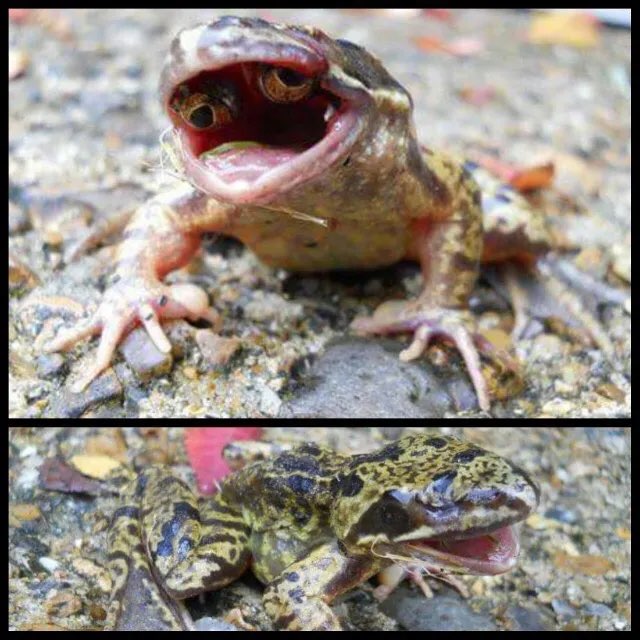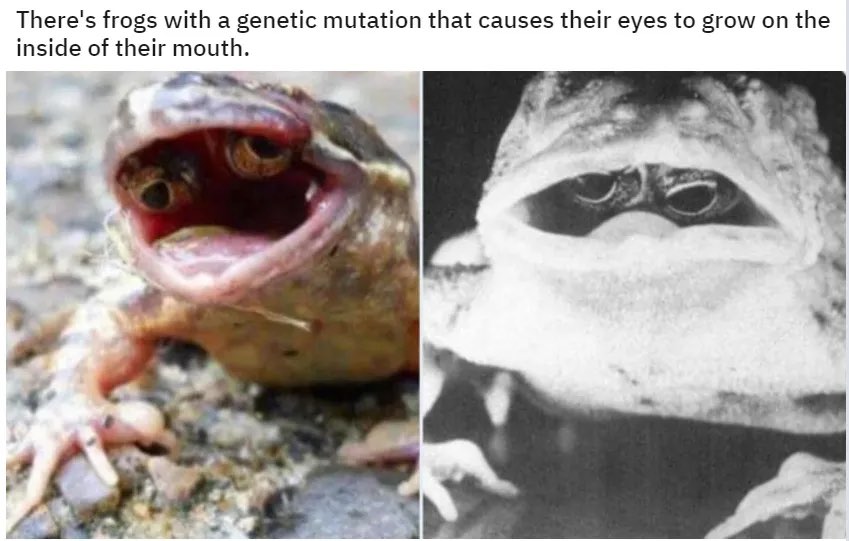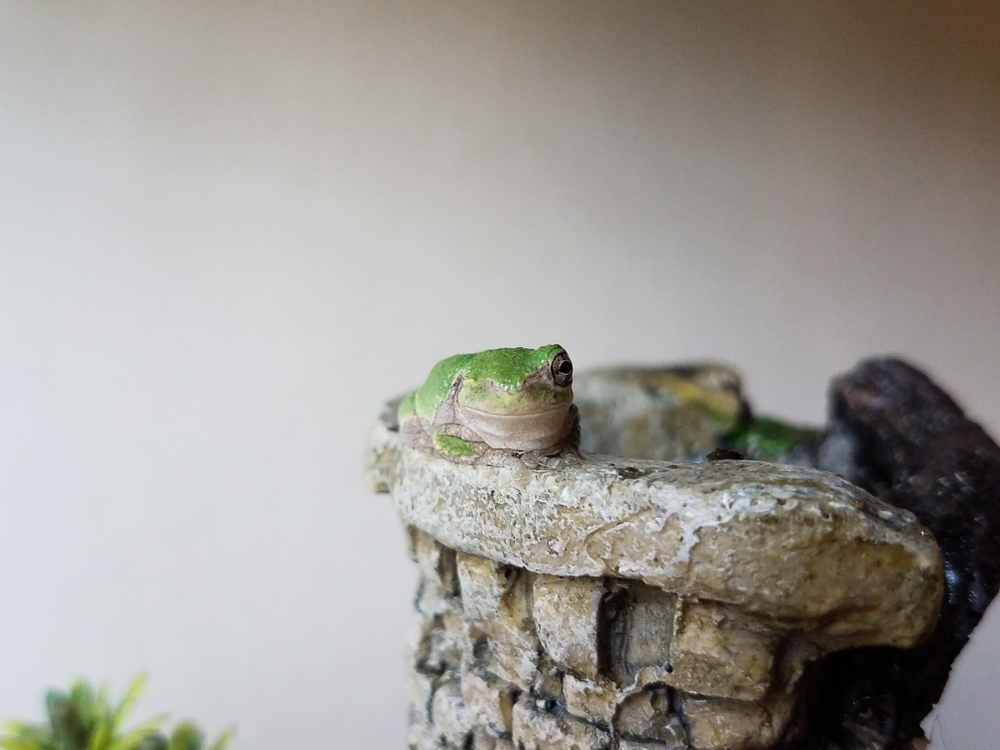Nature is full of weird specimens. Animals have developed strange, almost supernatural, abilities to hunt and survive. For example, the star-nosed mole can smell underwater. There are species of flying snakes that glide through the air to catch prey. Platypuses are the only mammals that lay eggs. Then there are those with strange appearances, like the sun bears that look like humans wearing bear suits. There are pink dolphins, pink mantises, and pink armadillos. And, according to a publication from the Cambridge University Press, there are frogs with eyes in their mouths.
The frog with eyes in its mouth

Strange photos have made its rounds over the internet of a frog with its mouth open to reveal two bulbous eyes. The top of the head is flat and bare. Although some photos of this phenomenon are difficult to source and verify, one was confirmed to be real. It was taken by Scott Gardner, a photographer with the Hamilton Spectator, in 1992.
The strange toad was found in a garden by high school student named Deidre in Ontario, Canada. According to the Cambridge University Press, she initially thought the toad had swallowed another toad’s eyes. Then she realized they were attached to the palate. When she tried to feed worms to the creature, which she named Gollum, it only ate if she put them directly into its mouth. Biologists attributed the strange feature to macromutation from an accumulation of genetic changes or from certain adaptations.
According to Snopes, Gardner published an article at the time titled “The Toad and I” where he recounted the event. He was photographing a girls’ baseball game with his radio dispatched him to a more important story: “A toad had been found. Not your ordinary toad, mind you, but one with eyes inside its mouth… I had to wait for it to open its mouth to look around so I could photograph the eyes. A quirky little photo, I thought.” The crew had used insects to entice Gollum into opening its mouth. After the photoshoot, Deidre took Gollum to herpetologist Professor Bogart at the University of Guelph. Although he had seen his share of amphibian deformities over the years, he had never seen this. He was shocked that a practically blind toad had survived at least two years in the wild.
What caused the frog mutation?

Putting aside natural adaptation, some researchers say the strange occurrence came from a parasitic infection by a trematode worm (Ribeiroia ondatrae). Scientists have recorded incidences where these infections caused severe limb malformation in frogs, namely by missing, extra, or twisted hind legs. When tadpoles are exposed to high numbers of parasites, they run a high risk of developing a deformity if they survive the infections, reports the Wildlife Futures Program. In more rare cases, deformities can occur in the front legs.
Although this mutation looks strange, the eyes don’t stray much farther than their usual position. In fact, some frogs retract their eyes while they eat, natural historian Sir David Attenborough explains in his “Fabulous Frogs” documentary on BBC. They pull their eyes downward as they swallow to help them force prey down their throats. So although it’s unsettling to see eyes in an amphibian’s mouth, it’s not an entirely unnatural position. Bogart theorized that Gollum’s eyes had developed upside down, as he had no eyelids on the top of his head where they should have been (which is typically seen in amphibians who rotate their eyes to swallow).
The problem with mutant frogs

Unfortunately, severely malformed amphibians are becoming less rare. Since 1995, reports of mutations appeared in “at least 44 states and in more than 50 species of frogs and toads,” says the United States Geological Survey. “Multiple limbs, missing limbs, and facial abnormalities are the main malformations seen.” Although mutated frogs look fascinating, they can indicate environmental changes. Amphibians breathe partially through their skin so they are fully exposed to their surroundings, and thereby more sensitive to things like disease, pollution, UV radiation, pesticides, etc. “The worldwide occurrences of amphibian declines and deformities could be an early warning that some of our ecosystems, even seemingly pristine ones, are seriously out of balance,” warns USGS.
Read More: Americans are Changing Their Backyards to Save Fireflies from Extinction
